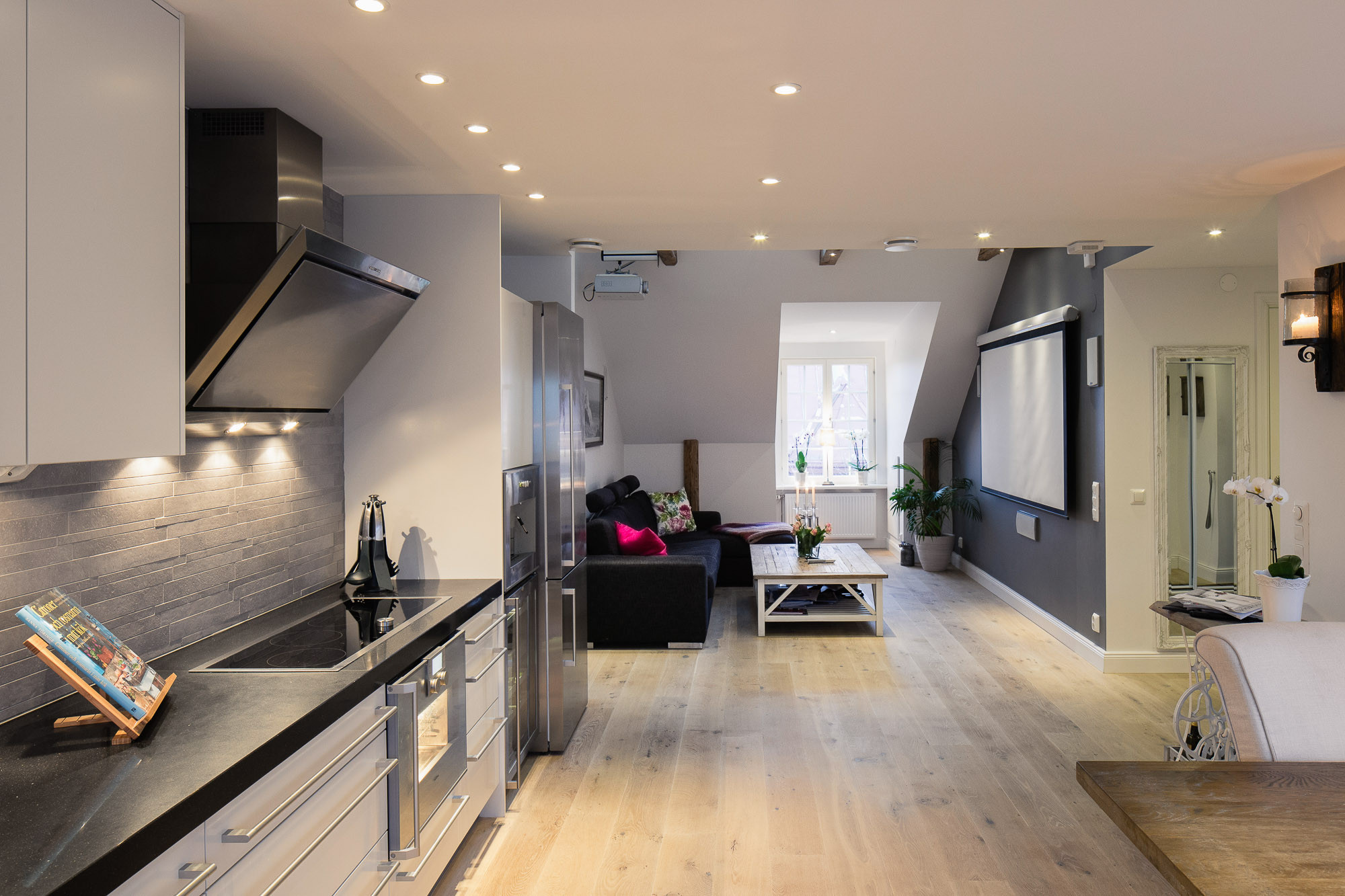Maximizing Space in a One-Bedroom Apartment: One Bedroom Apartment Design

Designing a functional and stylish one-bedroom apartment can be a challenge, especially when dealing with limited space. However, with smart planning and creative solutions, you can transform your small space into a comfortable and inviting haven. This section explores strategies for maximizing space in a one-bedroom apartment, including furniture selection, storage solutions, and multi-functional design elements.
Furniture Selection for Space Optimization
Choosing the right furniture is crucial for maximizing space in a small apartment. Opt for furniture that serves multiple purposes and minimizes visual clutter.
- Multi-Functional Furniture: Consider furniture pieces that can serve multiple purposes, such as a sofa bed that doubles as a guest bed, a coffee table with built-in storage, or a dining table that can be folded away when not in use.
- Compact Furniture: Choose compact furniture that fits the space efficiently. For example, a slim bookshelf instead of a bulky one, a small dining table instead of a large one, or a narrow desk instead of a wide one.
- Furniture with Storage: Look for furniture with built-in storage, such as beds with drawers, ottomans with hidden compartments, or coffee tables with shelves. This helps keep belongings organized and out of sight.
Storage Solutions for a Clutter-Free Environment, One bedroom apartment design
Efficient storage is key to maximizing space and creating a clutter-free environment in a one-bedroom apartment.
- Vertical Storage: Utilize vertical space by installing shelves, cabinets, and wall-mounted organizers. This maximizes floor space and keeps belongings organized and easily accessible.
- Over-the-Door Organizers: Over-the-door organizers are a great way to store shoes, accessories, or cleaning supplies, freeing up valuable floor space.
- Under-Bed Storage: Utilize the space under the bed for storing seasonal items, extra bedding, or other belongings. Consider using under-bed storage containers or drawers for easy access.
Multi-Functional Design Elements
Multi-functional design elements can help create a more spacious and versatile living environment.
- Murphy Beds: Murphy beds fold away into a wall cabinet, freeing up floor space during the day. This is a great solution for small apartments where space is limited.
- Built-in Shelves: Built-in shelves can add storage space without taking up valuable floor space. They can be incorporated into the walls, behind the sofa, or even under the stairs.
- Folding Screens: Folding screens can create temporary partitions, dividing a room into distinct zones without taking up much space. This can be helpful for creating a separate workspace or a guest sleeping area.
Creating a Cohesive and Stylish Design

Transforming a one-bedroom apartment into a stylish and functional space requires a thoughtful approach to design. A cohesive design creates a sense of harmony and unity, making the space feel larger and more inviting.
Choosing a Design Style
Selecting a design style provides a framework for making decisions about furniture, colors, and decor. Popular styles that work well in one-bedroom apartments include minimalist, Scandinavian, and bohemian.
- Minimalist: Minimalist design emphasizes simplicity, clean lines, and a limited color palette. It is ideal for small spaces as it creates a sense of spaciousness. Minimalist apartments typically feature neutral colors, natural materials, and functional furniture.
- Scandinavian: Scandinavian design is known for its use of natural materials, light colors, and functional furniture. It creates a warm and inviting atmosphere while maintaining a sense of order. Common elements include light wood furniture, white walls, and pops of color in textiles and accessories.
- Bohemian: Bohemian design is characterized by its eclectic mix of patterns, textures, and colors. It embraces a relaxed and eclectic style, often incorporating vintage and handcrafted items. Bohemian apartments may feature vibrant colors, global textiles, and a mix of furniture styles.
Creating a Cohesive Color Palette
A cohesive color palette is essential for creating a harmonious and stylish design. A well-chosen palette can enhance the mood of the space and make it feel larger.
- Neutral Base: Start with a neutral base, such as white, gray, or beige, for the walls and larger furniture pieces. This provides a backdrop for bolder colors and patterns.
- Accent Colors: Introduce accent colors to add pops of personality and interest. Choose colors that complement the neutral base and reflect your personal style. For example, you could use a warm yellow, a vibrant blue, or a calming green.
- Color Psychology: Consider the psychological effects of color when selecting your palette. Warm colors, such as red and orange, can create a sense of energy and excitement. Cool colors, such as blue and green, can promote relaxation and tranquility.
Incorporating Textures and Patterns
Adding textures and patterns can create visual interest and depth to a one-bedroom apartment. They can also help to define different areas within the space.
- Textiles: Use textiles to add texture and pattern to the design. For example, you could use a patterned rug, textured throw pillows, or a woven blanket.
- Wallcoverings: Consider using wallpaper or textured paint to add visual interest to the walls. Patterns can be used to create a focal point or to define different areas within the space.
- Natural Materials: Incorporate natural materials, such as wood, stone, or leather, to add warmth and texture to the design.
Using Lighting to Enhance Mood and Functionality
Lighting plays a crucial role in creating a welcoming and functional atmosphere. Strategic lighting can highlight architectural features, create a sense of spaciousness, and enhance the mood of different areas within the apartment.
- Layered Lighting: Create a layered lighting scheme by using a combination of ambient, task, and accent lighting. Ambient lighting provides overall illumination, task lighting provides focused light for specific activities, and accent lighting highlights specific features.
- Natural Light: Maximize natural light by keeping windows unobstructed and using light-colored curtains or blinds.
- Dimmable Lighting: Use dimmable light bulbs to adjust the brightness of the lighting according to the mood or activity.
